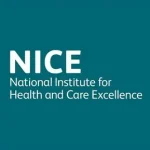What we really know about Lisavanbulin and glioblastoma (GBM)
There was a headline in the press this weekend about a ‘miraculous brain cancer drug’ that ‘shrinks tumours by 90%’ (The Times 20 June 2021). Here’s what we really know.
What is the story behind lisavanbulin?
Personalised medicine is recognised to be the best way to treat cancers, not just brain cancer. This means that treatments are created and targeted to treat the molecular make up of cancer. The exciting news about lisavanbulin is that this could potentially be one of the first targeted treatments for glioblastoma, the most aggressive form of brain cancer, when it recurs.
And herein lies the problem. The brain is a delicate and privileged site and brain tumours are complex, rare and intrinsically resistant diseases. We know that when a GBM tumour recurs, it is not the same as initial disease. We know too that individual treatment agents in isolation are doomed to failure, because there are multiple growth pathways that must be inhibited simultaneously. In other words, the cancer cells keep finding ways to work around the treatment.
How is lisavanbulin having an impact?
lisavanbulin is a produced by Basilea Pharmaceutica Ltd, a biopharmaceutical company based in Switzerland. Data from GBM mouse models and recent phase 1 clinical data (Lopez et al. ESMO 2020) suggest that EB1 is a response-predictive marker for lisavanbulin in GBM. This means that GBM tumours with the molecular marker EB1 may respond to lisavanbulin. A phase 2 study is ongoing at The Royal Marsden to confirm this hypothesis. So far two patients have shown a positive response.
It is very early days and as ever with personalised medicine, it will only be meaningful for small cohorts of patients who have the predictive marker, in this case EB1. The reason this has made the headlines now is that the results were reported recently at The American Society of Clinical Oncology conference (ASCO). You can read more about the scientific aspects here.
Is this a game changer?
So potentially, yes – this may be a game changer. But – it is a long long way from coming to to the clinic and if it does, then it will only be suitable for a very small cohort of patients who have the EB1 predictive marker. We need to see the results for the phase 2 study. If these show promise then phase 3 and phase 4 studies will follow. At this point, if it is proven to be successful, the treatment will need to be approved by the National Institute for Health and Clinical Excellence so that it can be provided by the NHS. This too would mean a change in the way tumours are tested, as the GBM tissue will need to be tested for the EB1 predictive marker.
Summary
The bottom line is yes, lisavanbulin shows promise in the lab with mouse models and currently in just two patients. But we have so many hurdles to cross before it could potentially be used in the clinic. This will take years and of course, may fall at any of the hurdles, like so many other potential treatments have to date. So whilst partially accurate, our feeling is that this reporting builds false hope. Clinicians are not able to prescribe this treatment at the moment and they may never be able to. You can though access it through signing up to the trial. If you want to find out more then there is more information here.
The Royal Marsden in London and The Beatson in Glasgow are currently recruiting to be followed by University College London, and the Sir Bobby Robson Cancer Trials Research Centre; Northern Centre for Cancer Care in Newcastle. Do have a look at the inclusion and exclusion criteria – these are very stringent and of course, it is only appropriate for people who have the predictive marker EB1.
If you’re living with a brain tumour and have any questions around this latest news, or want to access support, give us a call on 01983 292 405 or email hello@brainstrust.org.uk











